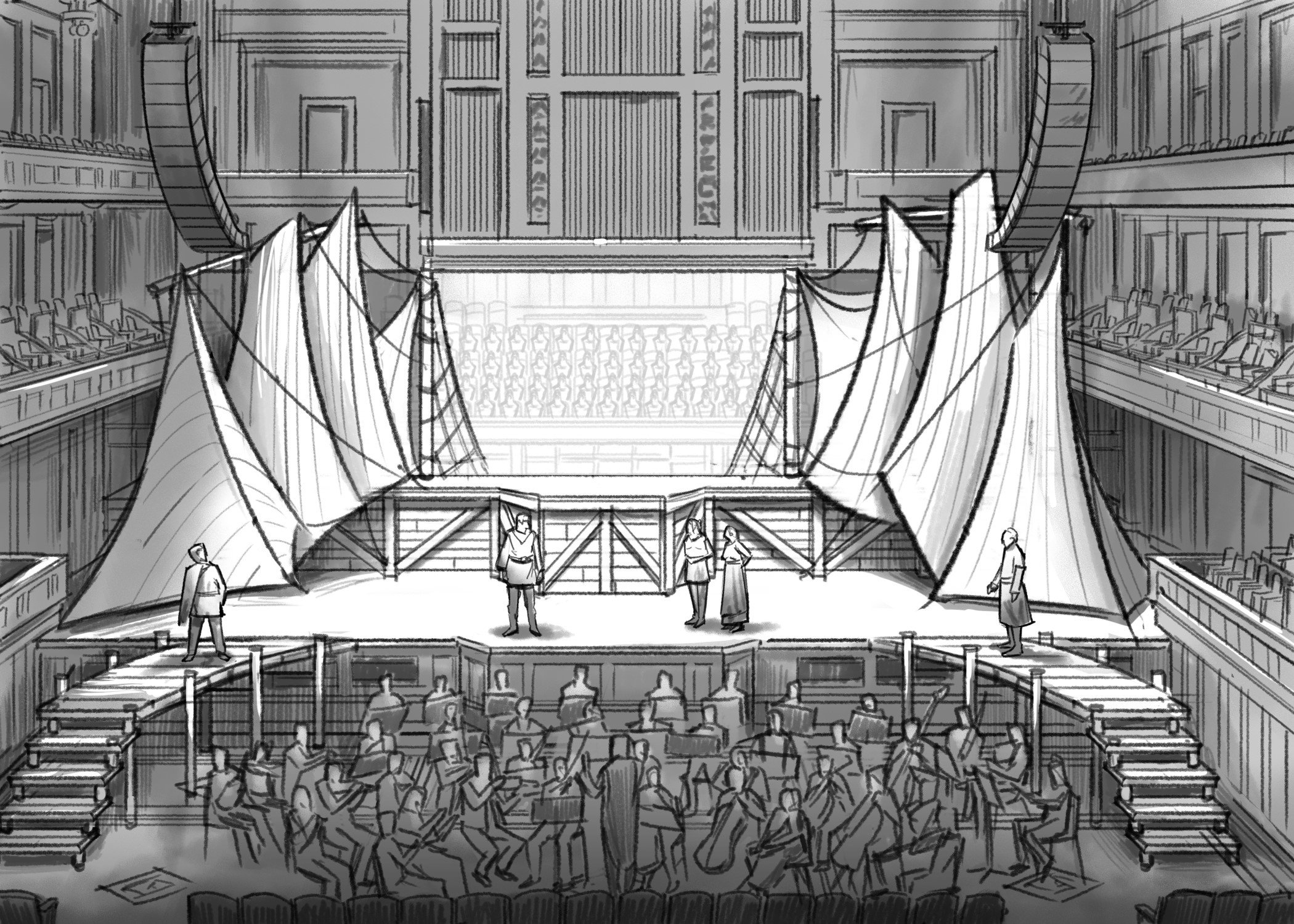Symbolism & Visual Representation
Lokumbe’s musical creativity is inextricable from his powerfully visual sensibility. An intricate network of symbols enhances his libretto and theatrical conception for The Jonah People. Here’s a brief overview of some of the most important of these:
The calligraphic sign of the Jonah People — the sweeping line of the boat cutting the waves intersected by two thin lines — represents all those who survived the Middle Passage and all those who perished (the portions above and below the boat, respectively), both females and males (the shorter and longer lines, respectively).
The wooden ship in which the Jonah People were transported looms as a symbol throughout the entire opera in the set designed by Shaun Motley. “The main playing space is the hull of the ship, surrounded by abstractions of sails on each side. This is where everything takes place,” he explains. “It is always present, even when the location shifts.” In Lokumbe’s metaphor, the area where the enslaved are held captive also symbolizes one of the three “wombs” from which the Jonah People have emerged (together with the womb of the Creator and the womb of a mother).
Shaun L. Motley, Set Designer | Render by Rashad Roan
Motley’s design concept is intended to create a “blank canvas” for Miko Simmons to paint using a remarkable array of projection technology and digital effects. “These tools give us the ability to create a magical, dimensional, immersive experience,” says Simmons — a flexibility that transforms the playing space from interiors to exteriors and across historical eras and changing seasons. He adds that the projections, film, and animations also encompass “magical places that are not part of reality, including dream worlds and the world in-between the real world and the heavens, where the ancestors are beholding the others.” After intermission, an ascending platform is added to the ship design and becomes the symbolic space for the opera’s spiritual journey. This allows for a shift in focus to the triumph and healing of the Jonah People.
Mask illustration courtesy of Eternal Lokumbe
The Mask of the Lost Soul, first seen at the end of Veil One, was designed by Eternal Lokumbe, the composer’s daughter. Subtly combining images of predator and prey, the mask is worn by those who have lost a sense of the humanity of others — by those, in Lokumbe’s words, “who feel it acceptable to enslave others, to brutalize, destroy and eradicate the culture of nations in the name of God, king or country.”
Another potent symbol is the African crow, whose cries are first heard at the beginning of Veil Two. This “most intelligent of all known birds,” writes Lokumbe, “is a witness to what is about to occur and continues to occur in a world where some humans have come to think that they are not its steward, but its ruler.” Simmons understands the crow as “an ancestor energy that follows and tells the story, acting as the watcher.”
Costume illustrations courtesy of Christelle Matou, costume designer
Color choices are also highly symbolic. In the costumes designed by Christelle Matou, for example, the colonizers wear red, while the Jonah People are dressed in white that starts bleeding red toward the bottom. The blue chalk of the spirit children symbolizes the aura that can never be destroyed. They carry pouches filled with sand to symbolize connection to the earth and its wisdom.






